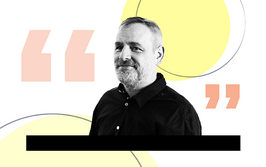Faster for Pharma
Sitting Down With... Melissa Hanna-Brown, Analytical Technology & Innovation Lead, Pfizer Global R&D, Sandwich, UK.
What is your current role at Pfizer?
I coordinate Pfizer’s pharmaceutical sciences external collaborations in analytical technology, which means bringing in new technologies that can accelerate the process of making new medicines.

You worked in academia previously…
I had a separation science lectureship in the pharmaceutical department at King’s College, London. I love teaching – seeing the “lights go on.” And I still teach separation science as part of my visiting position at Warwick University. My first role at Pfizer was technology-focused; I worked with the Pfizer Analytical Research Center, collaborating with people like Pat Sandra and Paul Haddad, so my role then was a hybrid between academia and industry. After that, I spent time leading analytical teams and learned more about the business, and now I’ve gone back to the technology side – but with a new understanding of how that technology is applied.
How did you find moving into industry?
It was exciting, but a big change. I went from having a lot of independence, to having to get “buy-in” from many stakeholders. It was a culture shock at first! I had to learn how to get people on board pretty quickly.
What appealed to you about the analytical side of pharma?
If I find something challenging, then I’ll be interested in it. When I was 13, I got a weekend job in a pharmacy and I worked there until I went to university. One day, the pharmacist and I had a discussion on what bioavailability was, and he started drawing pharmacokinetic plots of plasma drug concentration with time and explaining to me what the area under the curve (AUC) meant. He told me some basics about how this was important in the drug development process, and I was intrigued by the measurement aspects and what technology was used to produce this information. I was inspired to look at careers in the pharmacy area, and did a pharmaceutical sciences joint honors degree with chemistry. The problem-solving element fascinated me, and still does – though what fires me up now is finding better and faster ways to solve problems.
What are the biggest challenges in the field?
At Pfizer, our technology strategy includes advanced manufacturing – moving away from the batch concept to a continuous process. The analytical challenge behind that is huge. We’re used to doing in-process controls and taking samples away to the lab for testing; now, everything needs to be done online, with analytical sensors, miniaturization and microfluidics all posing particular opportunities.
Another area that affects the whole of pharma is predictive science. How can we be smarter about using knowledge we already have to save time? In chromatography, we’re focusing on predicting retention times based on structure, to ensure good starting conditions for our methods.
How well does analytical science serve pharma?
It’s always served pharma well, because it has to - analytical science is the glue that holds new drug applications together! We provide regulators with crucial proof about the processes we use to make medicine. Quality, safety and speed are always the drivers. We’re being required to make medicines in a shorter amount of time – less than five years from proof-of-concept to development (rather than the 10 or 15 year timelines of the past) – but with the same amount of information. That’s why modelling and computational science are increasingly important.
How else has the industry changed?
We’ve changed the way that we collaborate. Fifteen years ago, there were lots of one-on-one relationships, whereas now you see consortia forming around grand challenges in medicine development. For the pharma industry, that’s significant; we now recognize that a great deal of the work we do to develop a medicine is pre-competitive; your IP is in your molecule, so work outside of that and if you can share with other companies and get regulators involved, it speeds up the whole development process. I think that’s the way we will continue to work. We’re all sharing data so we can build predictive models and do it even faster in the future. Collaboration is essential for innovation.
What are you most proud of?
I’m most proud of – and thankful for – the networks that I have built over the years. It’s not the number of connections I’ve made, but the quality of relationships that I’ve nurtured that mean the most. Through my strong network, I have gathered mentors around me who I can always rely on for brutal honesty - but in a way that’s always constructive.
Is the stigma of going into industry (rather than academia) real?
Students always ask: Will I still be able to do science? Will I be able to publish? You’re always going to have to focus on projects, because that’s what you are there to do – to get medicines to patients – but although the projects may look very different from what you could be doing as an academic, you are still applying analytical knowledge. I worked on an oncology drug for one of our first accelerated programs in Pfizer, and it was highly rewarding. In the pharma industry, the product of your daily work is actually having a positive impact on people’s lives – it doesn’t get much better than that.
A former library manager and storyteller, I have wanted to write for magazines since I was six years old, when I used to make my own out of foolscap paper and sellotape and distribute them to my family. Since getting my MSc in Publishing, I’ve worked as a freelance writer and content creator for both digital and print, writing on subjects such as fashion, food, tourism, photography – and the history of Roman toilets. Now I can be found working on The Analytical Scientist, finding the ‘human angle’ to cutting-edge science stories.



















